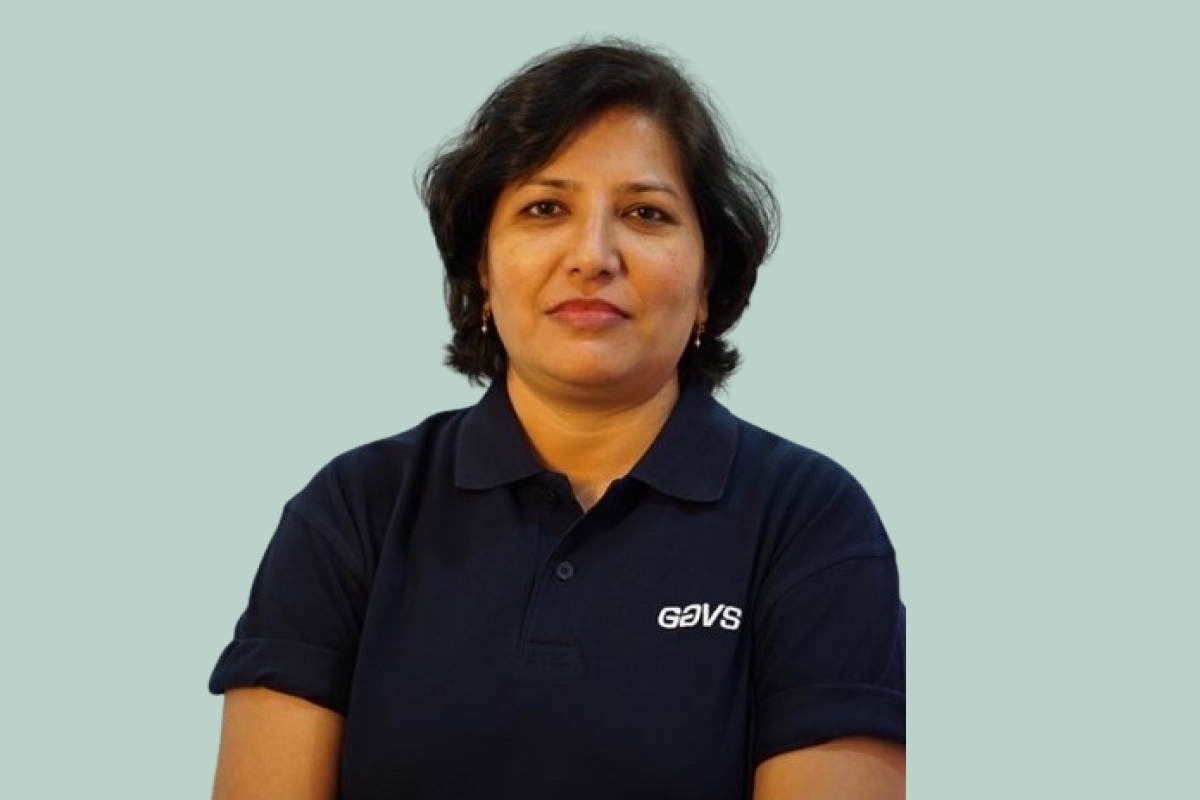Generative AI (GenAI) has great potential to streamline and automate many mundane and repetitive tasks that clutter our daily lives. It can assist in summarizing extensive meeting notes, condensing lengthy documents that one might need more time to read thoroughly, and even aiding in creating routine business documents. Generative AI is particularly adept at handling language, reasoning, and amalgamating different components of a task, which makes it a compelling solution for a wide array of use cases that were previously challenging to address.
The remarkable versatility of generative AI is undeniably one of its most thrilling aspects. These models can proficiently generate code, craft documents, compose music, and even produce video content, although the latter is still a work in progress.
GS Lab | GAVS has been conducted an ‘Everything Products’ series of webinars and fireside chats. A recent session from the series was a ‘Fireside Chat on Generative AI with AWS’. The session had three speakers – Mr. Guiseppe Zappia, GenAI Expert and Senior Solutions Architect, AWS; Mr. Randy DeFauw, GenAI Expert and Senior Principal Solutions Architect, AWS; and Mr. Sameer Mahajan, Principal Architect at GS Lab | GAVS. Mr. Mandar Gadre, a Technology Evangelist from GS Lab | GAVS, moderated the session.
Scope of Generative AI
An interesting use case of GenAI is in Regulatory Compliance of email correspondence. The ability to finetune a model to adhere to specific SEC compliance guidelines was demonstrated. This enabled the model to scrutinize email content, flagging elements as compliant or non-compliant with the specified regulations. Furthermore, it provided recommendations for rewriting sections to ensure compliance. Such a solution would streamline review processes and mitigate risk for businesses. The company could have been penalized had the original versions of the emails been sent. This showcases the multifaceted value that generative AI can bring, reducing manual effort while safeguarding against potential liabilities.
Development of Products with Generative AI
Before focusing on generative AI for developing applications, it is essential to understand the usage funnel. At the top level, many model consumers build applications or services using existing models. Going further down the funnel, users need more model tuners to finetune existing models according to their domain requirements. The bottom of the funnel has very few model producers who build entirely new models from scratch.
Things to Consider before Development
In developing a general application, and even in machine learning projects, the initial step involves evaluating whether the problem at hand is a suitable candidate for machine learning. The next step is a vetting process to determine if the issue can be addressed using traditional programming techniques. It is essential to weigh the cost and complexity of machine learning solutions against more straightforward programming solutions. Often, it’s more cost-effective to build a specific program for a task rather than investing in creating, training, and deploying machine learning models.
If it is established that machine learning is the way to go, the next step is to do a cost-benefit analysis – the potential business benefits and an estimation of the return on investment, including the Total Cost of Ownership (TCO). This phase also involves decisions about real-time versus batch processing and model selection. Questions like model size, the need for training or finetuning, and techniques like retrieval augmented generation are explored to understand the project’s potential costs and expected outcomes.
These steps eliminate many ideas that might not bring the desired value or could be addressed through alternative means. What remains are the ideas that truly shine and are strong candidates for utilizing generative AI or machine learning.
Best Practices While Using Generative AI
When choosing the generative AI path, it is essential to avoid tightly coupling your application to a specific model. Instead, build abstraction layers between your application and the underlying model. The reason for this is the rapid evolution of these models. Keeping your application flexible and decoupled allows quicker adaptations and changes, potentially giving you a competitive edge. While others struggle with complete application refactors when switching underlying models, your agility in making these changes can become a strategic advantage.
Focusing on ROI and evaluating the real benefits is crucial before diving into generative AI projects. It’s about making a well-informed choice and not spreading resources thin.
Choosing the correct training data, capturing the context accurately, and ensuring data quality are equally significant factors.
In practice, finding the most miniature model that yields acceptable results often proves beneficial and then additional techniques to enhance its performance can be applied. Users can focus on finetuning, where a small model, with the proper adjustments, can outperform a significant model in specific scenarios. Additionally, leveraging techniques like retrieval augmented generation on a smaller model can provide better outcomes than using a large model without these enhancements.
The critical takeaway is starting with simpler, smaller models and expanding as needed. Rather than beginning with the largest model and paring it down, growing your model size is more effective based on practical reasons and requirements, ensuring a more efficient and cost-effective approach.
In terms of these trade-offs, model size is just one aspect, and there’s also the matter of the training data size. These choices involve striking a balance between the level of intelligence desired in the model and the available computational resources. It’s a complex interplay, and generative AI certainly adds another layer of complexity to these decisions.
While this blog is a gist of the insightful discussion, you can watch it entirely here. To watch our other webinars, please visit https://www.gavstech.com/videos/ and https://www.gslab.com/webinars/.
GS Lab | GAVS offers Generative AI Services by taking a methodical approach to tackle a wide range of challenges and explore exciting possibilities through the power of GenAI. We offer customized solutions tailored to your unique needs, delivering significant advantages to your business, customers, and employees. Simply stated, we make GenAI work for you responsibly and securely.
- Conducting Goal Alignment workshops for people managers, encouraging them to view this process not merely as a measuring tool but as an avenue to cultivate responsibility and autonomy while focusing on both individual and collective growth.
- Providing coaching and training to people managers across the organization, emphasizing Effective Performance Feedback conversations and empathetic listening.
- Implementing Quarterly Performance Feedback as a significant game-changer, crucial for maintaining a continuous feedback mechanism.
- Collaborating with a Consulting firm to ensure equitable compensation at work, benchmarked against industry standards and promoting fairness and parity.
- Implementing a tailored Career Development Plan (CDP) based on the 3Es (Education, Exposure, Experience) to address the growth of all individuals.
- Establishing ‘Galvanizers,’ a Top Talent Program designed for high-potential individuals and emerging leaders.
At GS Lab | GAVS, it is also one of our stated goals to emerge as a better workplace for women. Our commitment to diversity and inclusion plays an integral role in our success. Even for some of the most business-critical roles, we have enabled our women colleagues to play their roles from remote locations, thus supporting their personal commitments and ensuring their professional growth. Additionally, we offer enhanced flexibility to women both before and after maternity leave.
We are thus driven to create an organization with a purpose, contribute to addressing some larger societal issues, by being a significant player in the healthcare tech space coupled with our innovative solutions and value to customers.
At GS Lab | GAVS, we are dedicated to nurturing a culture that values every individual, their aspirations, and their journey within our family. The foundation of respect, integrity, trust, and empathy, embodied in our RITE pillars, sets the stage for a workplace that is aligned and purposefully driven.
Our colleagues have given us the vote of trust through the Great Place of Work recognition and are committed to sustaining a high trust and high performance culture. As we move forward in this journey, we remain steadfast in our pursuit of creating an environment that not only fosters success but also enriches lives. We look forward to continuously evolving, leveraging innovation, and making a lasting impact on our team, customers and the world we serve. Together, we aspire for excellence, united by a collective #SenseOfPurpose.

Author
Sangeeta Malkhede, Global Head of HR, GS Lab | GAVS
Sangeeta Malkhede heads our Global HR team. A senior HR leader with strong convictions, values, and experiences, she has an innovative approach towards HR practice and at her previous leadership roles she drove overall HR to enable Culture of Performance, Building Leadership Talent, Organization Effectiveness, Change Management and Employee Engagement etc.
Sangeeta is an avid reader and a keen observer of human behavior. She enjoys playing & following Badminton, Tennis and Cricket, has a passion for cooking, travelling and hydroponic farming.




